Winning in the Atlassian Marketplace takes more than just having a great app. A staggering 67% of apps in the marketplace struggle with less than 100 installs. This statistic, highlighted in Brighttail’s Atlassian Marketplace Map 2023, sets the stage for a deeper exploration into what separates the winners from the rest.
Our analysis focuses on the top 5 Atlassian Marketplace partners based on the total number of app installs, excluding platform-independent, big-brand software like Lucid and Figma. By examining the strategies of leading Marketplace partners like Smartbear, Adaptavist, Tempo, Appfire, and HeroCoders, this study gives you a blueprint for not just surviving but thriving in this competitive space.
Read on to learn how leading partners have combined organic and paid channels to drive long-term growth and secure their positions at the top of the Marketplace.
Key Strategy #1: Comprehensive Content Strategy with an SEO Edge
Four out of five of the leading partners enjoy 5-digit monthly website traffic with at least 70% nonbranded organic traffic. How do they do it? They focus on attracting, engaging, and converting visitors with diverse content catering to audience needs at different stages of the buying journey. Beyond producing valuable content, they optimize it for search algorithms, ensuring that they are the go-to resource for potential buyers. Eventually, those app installs start to tick upwards.
- Smartbear boasts an extensive content library of 1,870 blog posts, contributing to the highest monthly website traffic among the partners studied. The company’s diverse content portfolio includes formats such as ebooks, case studies, webinars, white papers, and videos.
- Adaptavist follows with 806 blog posts and a balanced mix of content types, such as ebooks, webinars, case studies, and podcasts.
Smartbear and Adaptavist show us how through a rich tapestry of content, from insightful blog posts to in-depth ebooks and engaging videos, they’re able to enhance visibility and attract potential users. Content variety is crucial, with formats ranging from blog posts for initial awareness to whitepapers for in-depth exploration, each tailored to specific stages of the buyer journey.
We also noticed a strong correlation between the volume of content and the amount of nonbranded organic traffic. More than 50% of the content materials constitute blog posts, showcasing the undeniable influence of search engine optimization (SEO) in attracting visitors. SEO tactics, including keyword research and backlinks, are integral to drawing organic traffic. A particular emphasis is placed on a well-orchestrated content strategy that speaks to a broad yet targeted audience spectrum while ensuring prime visibility on search engines.
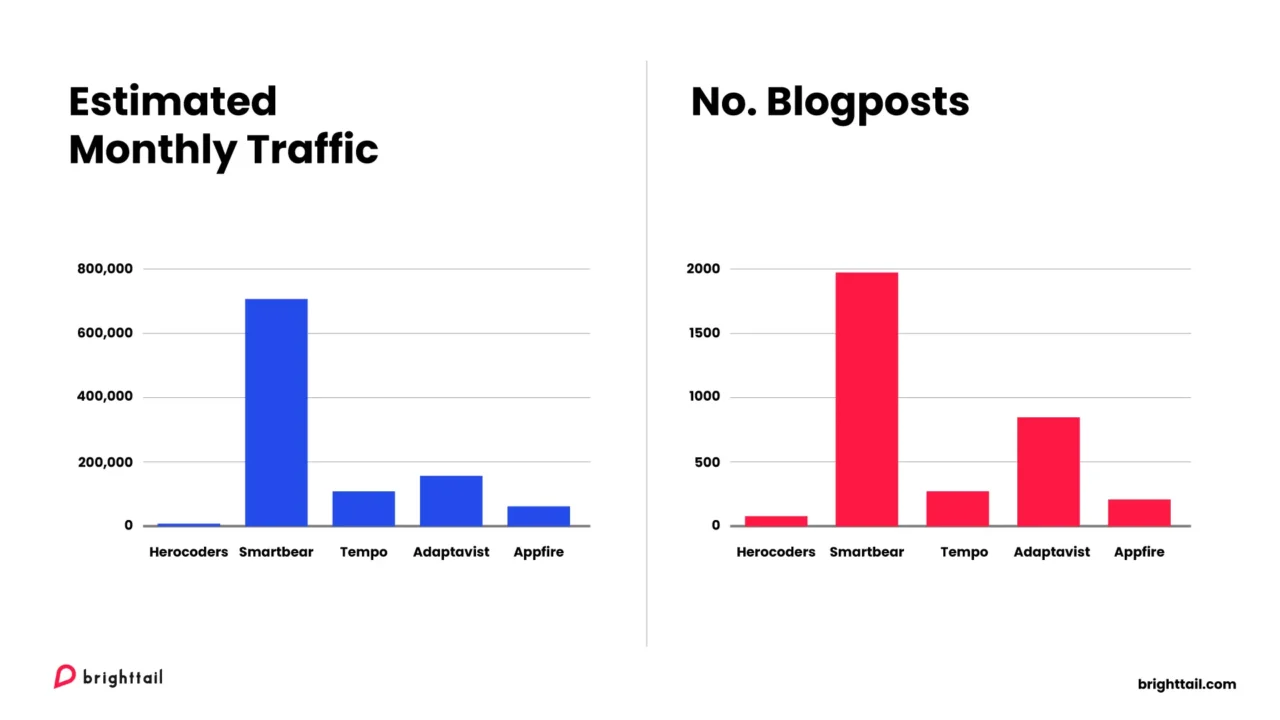
Takeaway: Long-term success is the result of a consistent, disciplined approach to expanding your audience and providing value to it. If you haven’t done so already, start by building a content strategy anchored around your blog. Aim to publish at least one blog post every two weeks to increase your organic traffic. Then, explore other content formats like ebooks, whitepapers, and webinars to help incoming visitors take the next step in their decision-making process.
Key Strategy #2: Social Media Mastery – Building Brand and Engagement
Top Marketplace partners maintain a consistent presence across LinkedIn and X, demonstrating the importance of engaging content and active participation in driving social media success.
Through a detailed examination of these leading partners’ social media strategies, we can see the impact of their social media posts on engagement rates and follower growth. By analyzing posting frequency, engagement metrics, and audience growth on LinkedIn (since the majority are most active on LinkedIn), we identified a key pattern: 2 to 7 posts a week seemed to hit the sweet spot for growing followers and engagement.
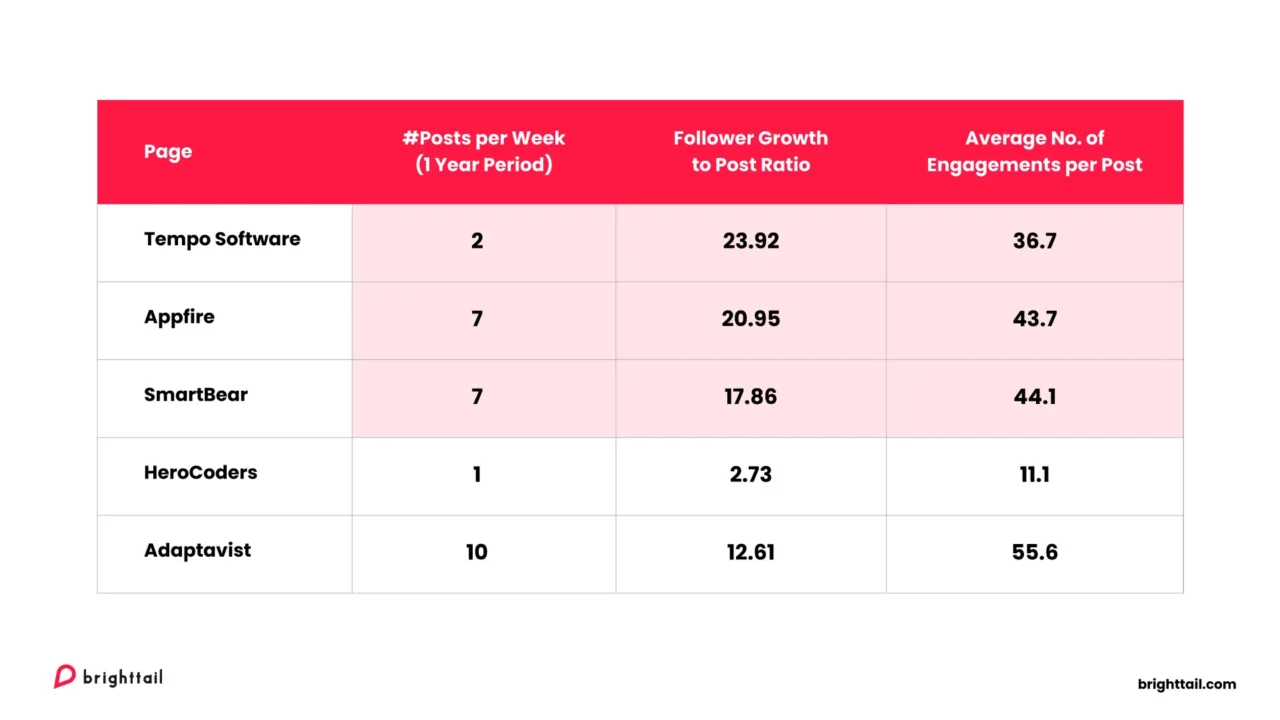
Among all the leading partners, 3 out of 5 average 2 to 7 posts a week consistently over a year. With this publishing cadence in place, we discovered that:
- These partners see an average of 36 – 44 engagements per post.
- These partners see a Follower Growth to Post Ratio ranging from 17 to 24.
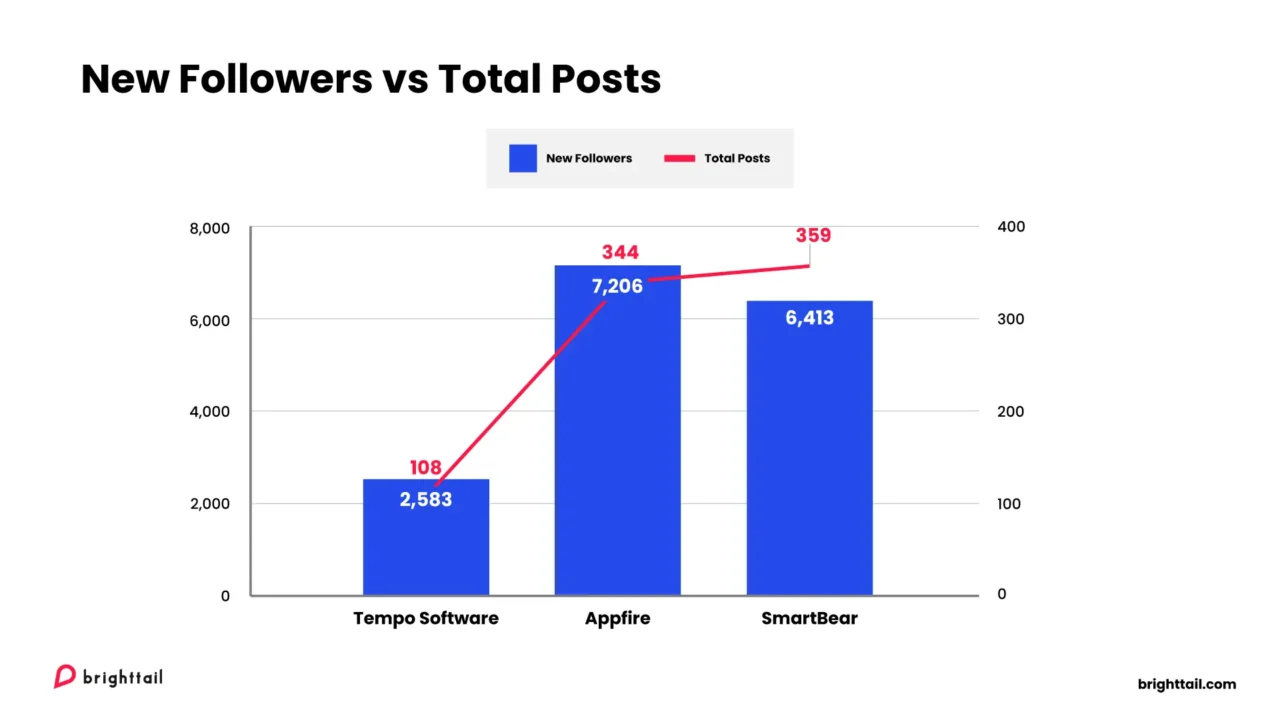
Tempo achieved the highest Follower Growth to Post Ratio at 24 among all partners. Diving deeper, Tempo.io shines with its platform-native approach to its social media content on platforms like LinkedIn, X, and Instagram. Tempo tailors its content strategy to each platform, selecting the right memes to spark conversations on X (formerly Twitter), while well-crafted posts on LinkedIn to educate and build trust.
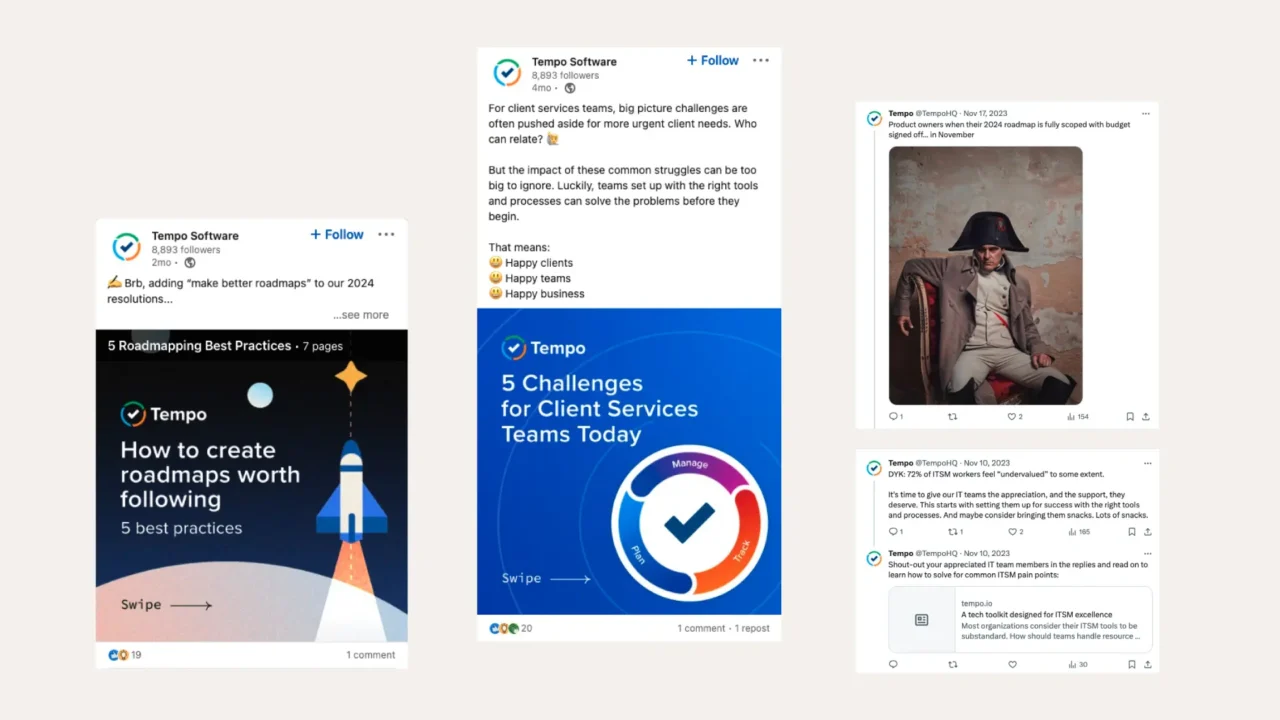
The strategic repurposing of content across these platforms, complemented by savvy efforts to engage with their communities where they hang out, underscores the significance of social media in these brand’s overarching marketing strategy.
Takeaway: One of the keys to long-term success is building a community of people who look to your brand for help navigating changes in their world. Social media can be a valuable platform for connecting with your target audience, distributing content, and engaging in rewarding conversations with prospects and customers. You can get started by developing a strategy and monthly calendar for your social accounts and being purposeful about delivering value to your audiences on a consistent basis.
Key Strategy #3: Smart Spend to Maximize Reach and Conversions
Targeted paid advertising complements organic efforts, extending the reach and amplifying key messages. Notably, 4 out of 5 partners utilize paid advertising campaigns. They commonly employ LinkedIn ads and Google Display ads to promote content and drive webinar registrants, while they use Google Search Ads to direct traffic to product pages and Marketplace listings.
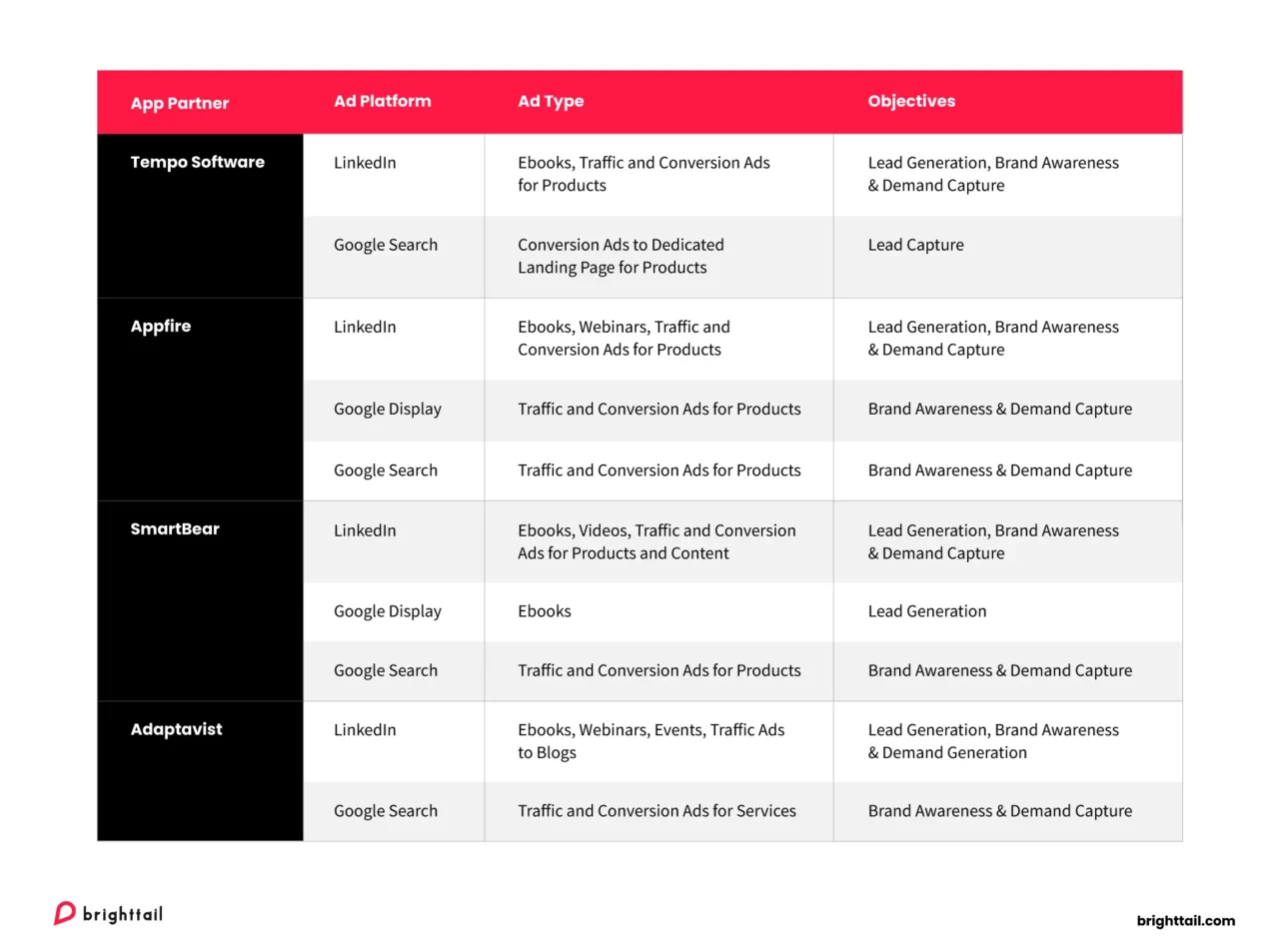
This strategic use of paid media, along with the observed correlation between paid search ad spend and branded keyword search volume, highlights the nuanced application of paid media in enhancing brand visibility and achieving marketing objectives. That is to say, Marketplace leaders who use paid advertising campaigns to promote content benefit from more people researching their brands and products in search engines.
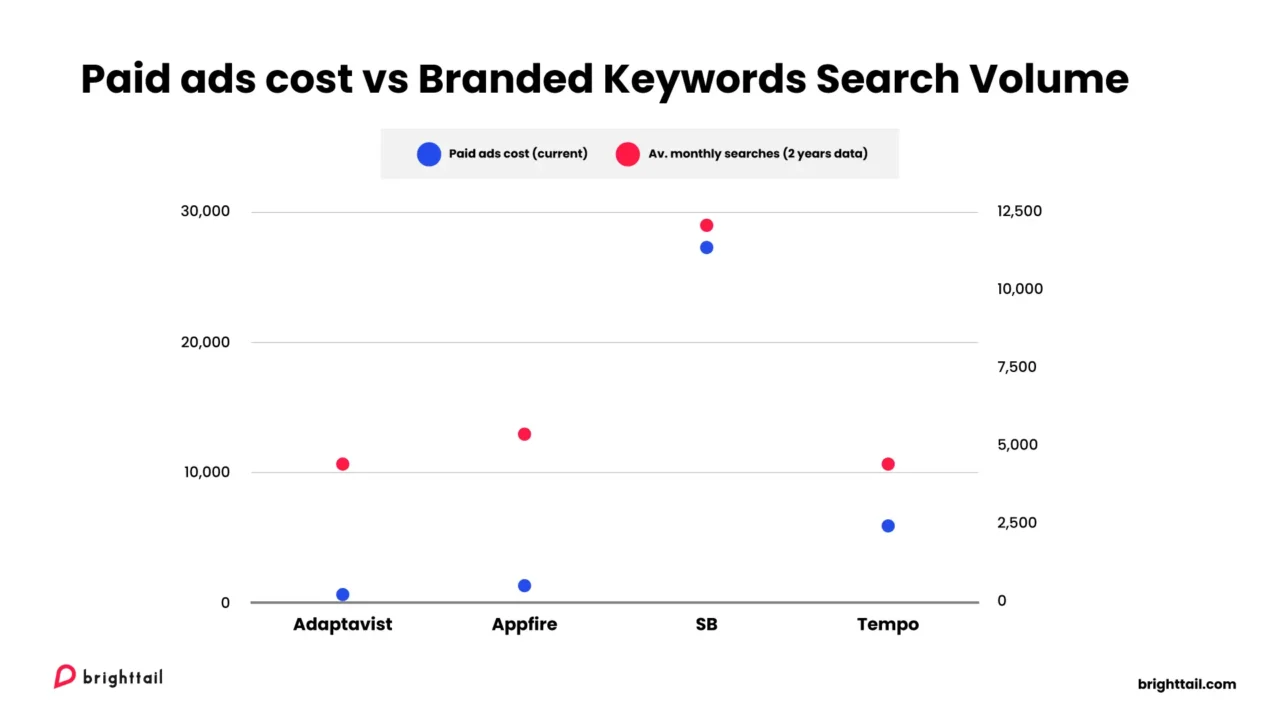
The effectiveness of paid ads hinges on precise audience targeting and clear objectives, from lead generation to product awareness. To maximize your return on investment (ROI) for paid advertising, avoid overly broad targeting, poor landing page design, and user experience, and be sure to set up tracking and analytics properly to be able to measure your campaign performance.
Takeaway: Paid search and social media advertising can be profitable growth channels if you use them correctly. Consider getting started with a two-pronged approach: First, use search advertising to capture high-intent buyers who are actively researching your brand and product-related keywords. Second, use display and social media campaigns to promote your most valuable content assets. The latter strategy increases brand awareness, engages inactive buyers, and drives further search interest in your brand and products.
Key Strategy #4: Nurture a Vibrant Community Through User-generated Content
Successful software companies understand that their users are their best advocates. By nurturing a space for them to share, learn, and grow, you’re not just building a community; you’re fostering loyalty and empowering champions.
Smartbear is the only app partner with dedicated forums for each of its apps, as well as educational resources like the Smartbear Academy to help beginners learn how to utilize its solution better.
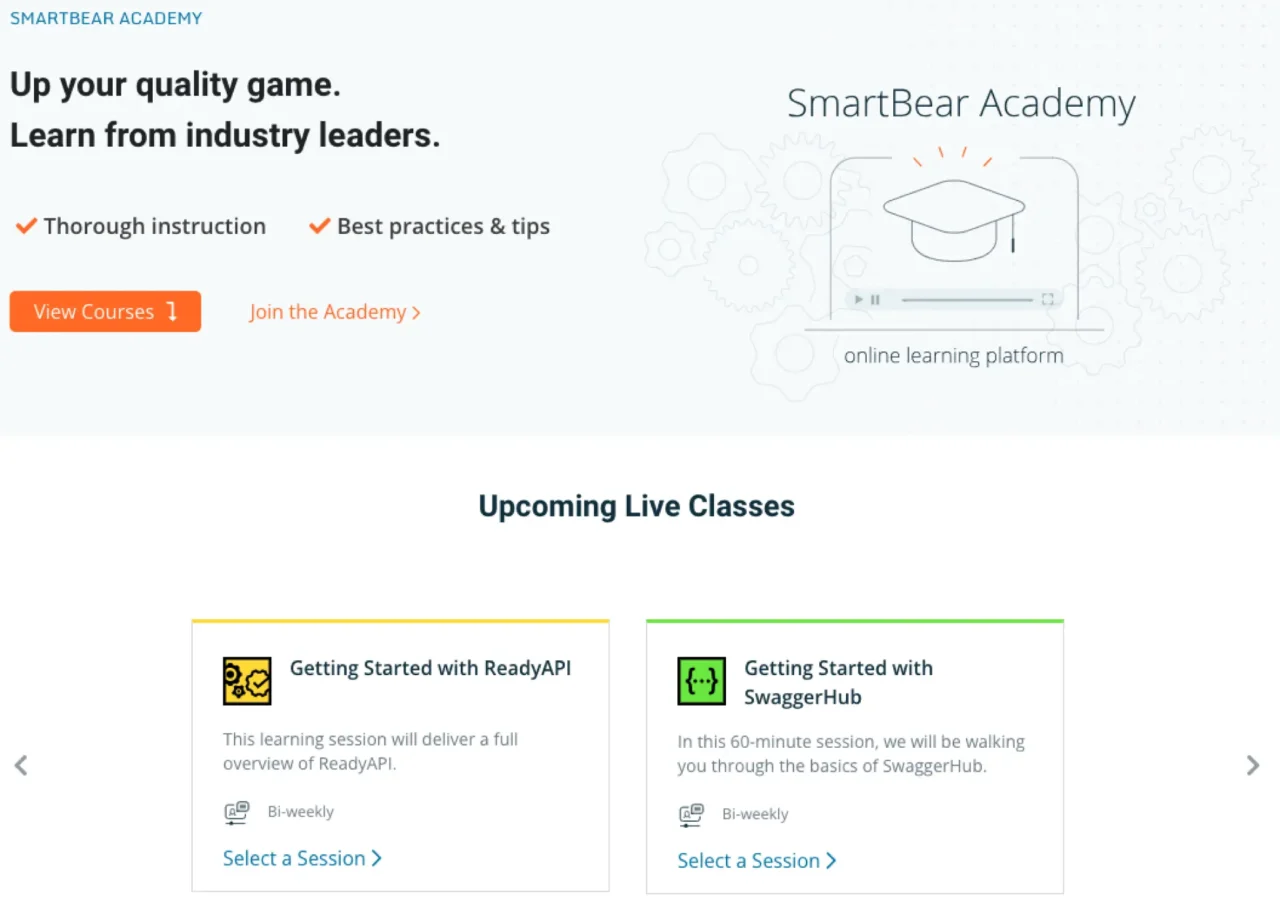
It is also worth noting, that Smartbear’s community-driven approach and user-generated content have contributed to an additional 38% of keywords that it is ranking for in the search engines, bringing in up to 5,000 additional visitors per month.
Community platforms–such as forums, Slack channels, and user-centric events–serve as vibrant hubs for support, learning, and engagement. Their impact goes beyond mere numbers—creating a sense of belonging and a shared journey towards solving real-world problems. They are especially valuable for highly technical apps where standard documentation may not be sufficient to cover all grounds and use cases.
Takeaway: One of the biggest challenges with the Atlassian Marketplace is that you don’t “own” your customers and, for better or worse, Atlassian places a variety of restrictions on how you can engage with them. One solution to this problem is creating your own community platform, whether a forum, Slack channel, or user event.
Key Strategy #5: Leverage Data and Analytics for Strategic Decision Making
In the quest for Marketplace dominance, your compass is as crucial as your strategy. Multichannel marketing analytics offer a bird’s-eye view of what works and what doesn’t, allowing you to pivot, adapt, and thrive. Understanding user behavior and campaign effectiveness is essential for those who are serious about driving sustainable, long-term growth.
It is no wonder that these leading partners have at least 5 types of martech software in use for data collection, team efficiency, and performance management. Some of the advanced partners are seen to have up to 9 types of martech tools in place, with additional tools to support ABM efforts.
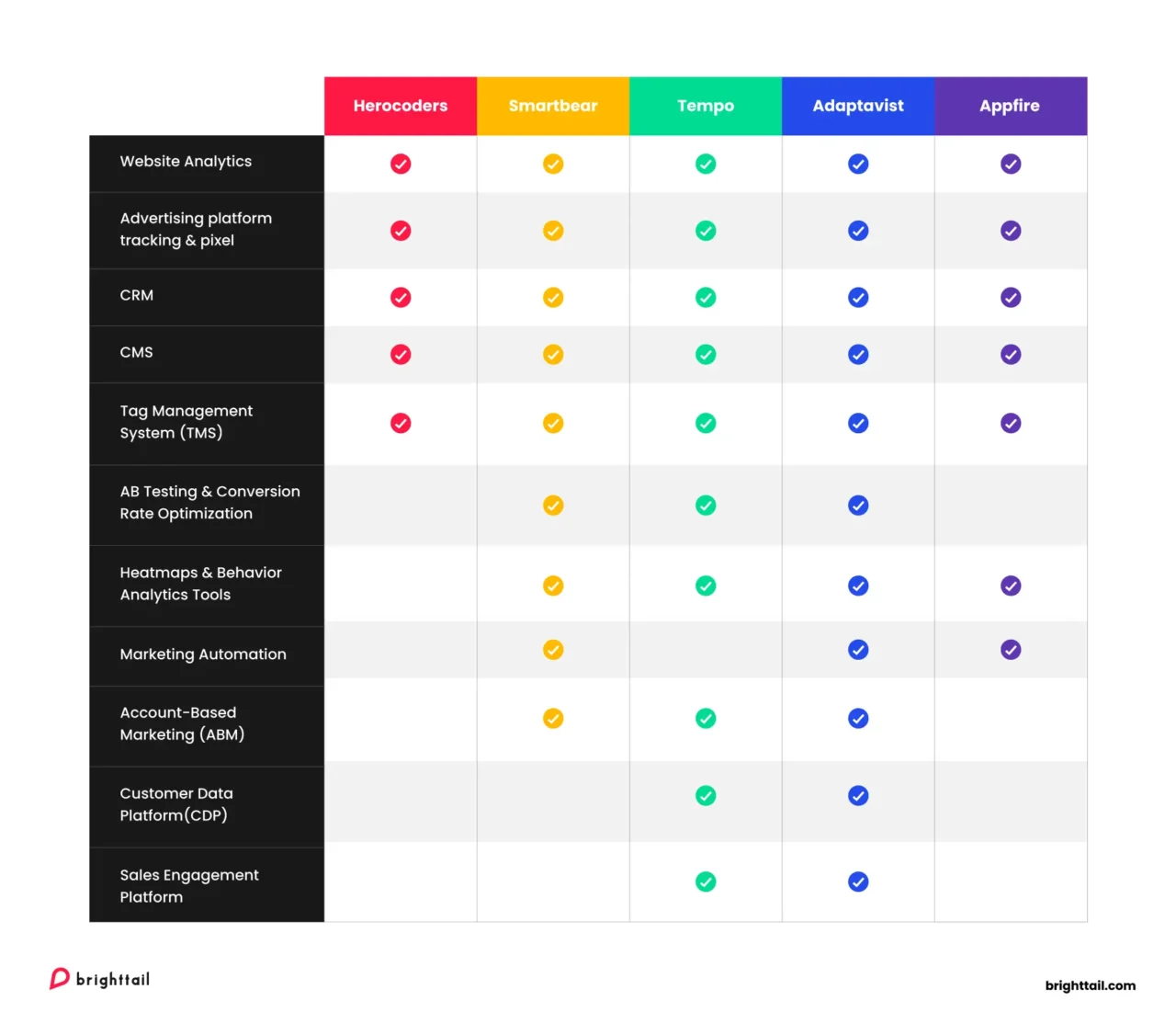
Navigating a multi-touchpoint environment like the Marketplace requires more than just attention to your website but also Marketplace’s tracking to capture accurate insights into the performance and ROI of your marketing campaigns and channels. It’s no surprise, then, that 4 out of 5 leading partners have advanced Marketplace tracking and analytics setup.
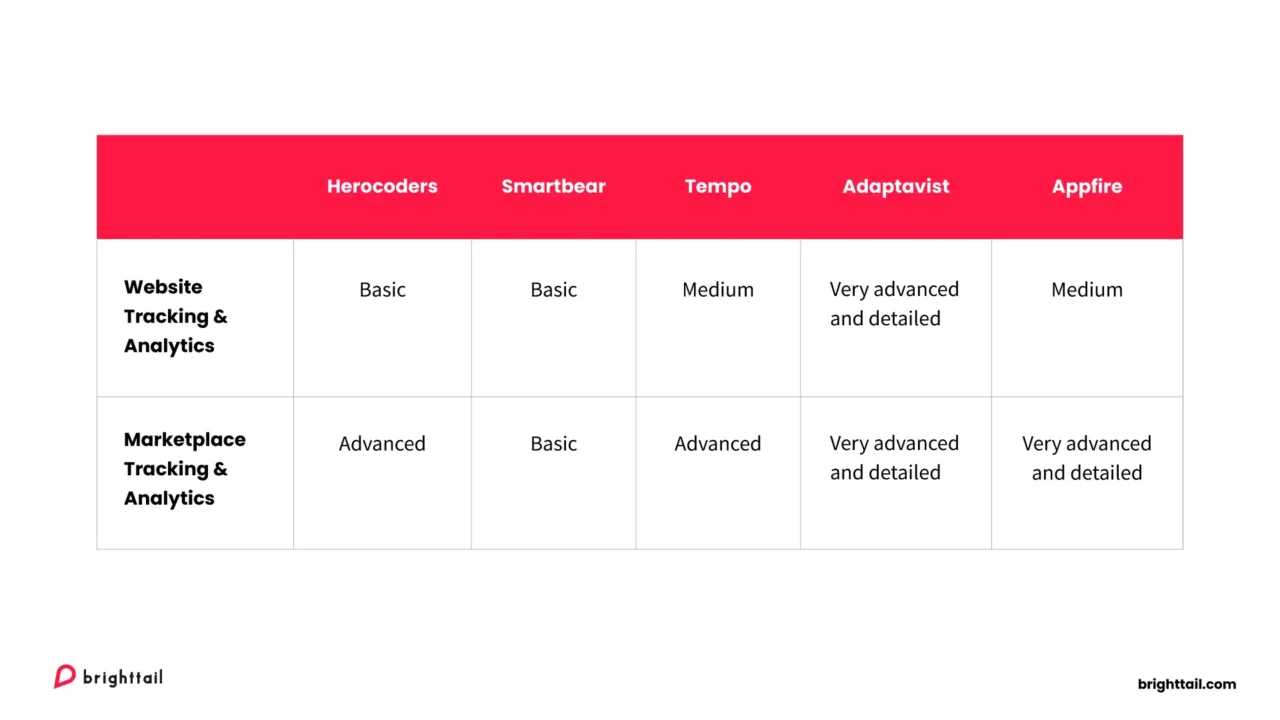
By utilizing Atlassian’s attribution data and other analytics tools with proper setups, Marketplace partners can overcome some of the challenges of attribution in digital marketing. This data enables leaders to make informed decisions that align with their strategic objectives, thereby increasing their chances of surpassing the critical install benchmark.
Takeaway: Successful marketing programs are built on a bedrock of data and insights. We hear from a lot of Marketplace partners who struggle to make informed decisions around marketing investments because they lack confidence in their tracking and attribution systems. If you find yourself in this position, start by getting your tracking and attribution reviewed by Marketplace experts. Experienced Marketplace specialists like Brighttail can help you overcome many of the challenges around Marketplace attribution, empowering your business with the data it needs to invest in and grow your acquisition channels with confidence.
The Blueprint for Success – From Insights to Impact
The success of these leading Atlassian partners is not a mere coincidence but the result of a deliberate, multifaceted approach to marketing. They harness the power of content with organic efforts, weaving it into their targeted advertising campaigns, community building, and tying it all together with data-driven decisions. This blueprint offers a solid foundation for Atlassian Marketplace partners aiming to elevate their market presence and foster meaningful connections with their audience.
Next Steps
If you’re keen to delve deeper into these strategies and transform your marketing approach, our forthcoming webinar “Building a killer go-to-market plan for your Marketplace app” promises a wealth of knowledge and practical tips from our experiences. Join us to uncover the secrets behind these success stories and chart your course in the competitive landscape of the Atlassian Marketplace.


